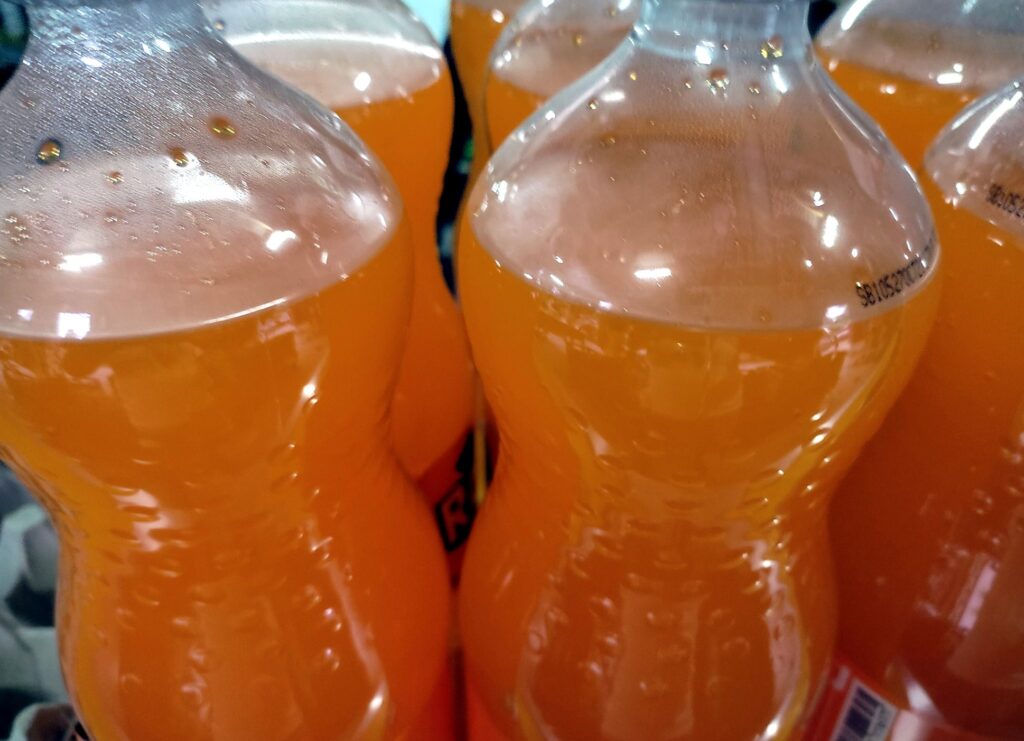Text by Henrylito D. Tacio
Photos: HDT, eatthis.com, shutterstock
Everybody loves soft drinks, including children. A soft drink typically contains carbonated water, a sweetener, and natural or artificial flavoring. The sweetener may be a sugar, high-fructose corn syrup, fruit juice, a sugar substitute, or some combination of these.
But soft drinks are not really good for your health. In fact, those who have a penchant for drinking sugary sodas are at risk of having health problems.
A recent study carried out by researchers at Johns Hopkins Bloomberg School of Public Health in Baltimore found that a high intake of sugar sweetened beverages may be linked to an increased risk of developing chronic kidney disease.
The Clinical Journal of the American Society of Nephrology published the findings of the study, which looked at 3,003 African-American men and women with normal kidney function who were enrolled in the Jackson Heart Study, “a long-term study investigating risk factors for diseases such as high blood pressure, heart disease, strokes, and diabetes.”
Still, another earlier study also came up with the same conclusion. The researchers examined the relationship between carbonated beverages, including soft drinks, and chronic kidney disease, using data from 465 patients with newly diagnosed chronic kidney disease and 467 community controls recruited in North Carolina between 1980 and 1982.
The result of the study: “Drinking two or more soft drinks per day was associated with increased risk of chronic kidney disease. Results were the same for regular soft drinks and artificially sweetened drinks. Non-cola carbonated beverages were not associated with chronic kidney disease.”
These studies are a wake-up call for Filipinos, especially those who love to drink soft drinks. In fact, more and more Filipinos are drinking soft drinks, which contain huge amounts of sugar.
A study published by the World Health Organization (WHO) showed that Filipinos consumed 14.9 grams of sugar per capita per day from sugar-sweetened beverages alone in 2005. Ten years later, the figure increased to 21.4 grams.
It’s not surprising why kidney diseases are on the rise. Kidney diseases almost always progresses to kidney failure, which will require either dialysis or transplantation to treat. One Filipino suffers chronic kidney failure every hour, according to the National Kidney Institute.
Every year, more than 7,000 cases of kidney failure in the country are recorded, data from the Department of Health (DOH) shows. This puts kidney failure as the ninth leading cause of death among Filipinos today, according to the National Kidney and Transplant Institute (NKTI).
“(At least) 20% of Filipinos were diagnosed with chronic kidney disease, based on the glomerular filtration rate (GFR) which measures kidney function,” wrote Philippine Daily Inquirer’s Chrisha Ane Magtubo in 2017. “Presently, there are 70,000 patients on dialysis and even with thousands on the waiting list for a kidney transplant, only 400 are able to undergo transplantation annually.”

Pouring softdrink (Shutterstock) 
Orange
The kidneys, two bean-shaped organs, are important parts of the urinary system. “They are found at each side of the spine, below the rib cage of the human body,” the NKTI says. “Each kidney is as big as a fist.”
The kidneys perform vital life-maintaining functions as monitors and regulators of the body. “They excrete fluids when the body has an excess of them and retain the substances necessary for the body’s continuing function,” the NKTI explains. “They produce and release a variety of chemicals to keep the body healthy and filter the entire blood supply every 2 minutes, excreting waste materials through the urine.”
The kidneys also produce erythropoietin, a hormone that controls the production of red blood cells by the bone marrow. They also are involved in the regulation of blood pressure.
Unknowingly, health problems affecting the kidneys are becoming common compared to in the past. If you go to a street and ask an average man what medical problem they fear most, they would either mention stroke or heart attack. “Many Filipinos don’t realize that developing kidney failure can be just as disabling and life-threatening,” says Dr. Rafael R. Castillo, a cardiologist at the Manila Doctors’ Hospital.
“If your kidneys fail, you need treatment to replace the work they normally do,” says the National Institute of Health in the United States. “Before dialysis was available, total kidney failure meant death,” says the US National Kidney Foundation (NKF). “Today, people with kidney failure can live because of treatments such as dialysis and kidney transplant.”
According to medical experts, dialysis is a way of cleaning the blood when the kidneys can no longer do the job required from them. Dialysis gets rid of the body’s wastes, extra salt, and water aside from helping control the blood pressure.
Those with end-stage renal disease (ESRD), dialysis is not the treatment. A kidney transplant is often the only hope for survival for these people. While the number of patients with ESRD is increasing, the number of living and deceased kidney donors remains dismally low.
Dr. Enrique Ona, who used to be the director of NKTI, said that kidney transplantation is cheaper than dialysis “in the long-term.” “Moreover,” he added, “survival rates and quality of life in transplants are much better.”
Transplant costs half a million pesos to one million pesos for a one-time surgery, as long as the donated organ is not rejected by the recipient’s system. “The cost of medical treatment for kidney disease is really exorbitant, beyond the reach of ordinary patients,” the NKTI points out.
More often than not, people with diabetes are most likely to develop kidney problems, too. Diabetics do not automatically develop kidney disease, clarifies Dr. Luis Limchiu, head of the Adult Nephrology Department at NKTI. “Most of the disease is chronic,” he says. “They don’t develop kidney disease in 5 years, but in 10 to 15 years.”
In the Philippines, an estimated 7.3 million people have diabetes, with 3.5 million of them diagnosed and the remaining ones undiagnosed. Some health experts believe the explosion of diabetes cases in the country is partly due to drinking soft drinks.
“The risk of developing diabetes is 26% higher for people who consume one or more sugary drinks every day,” wrote Markus MacGill for the website of Medical News Today. “Even switching to artificially sweetened or ‘diet’ soda containing sugar alternatives may not reduce the risk of diabetes.”
A study published by the American Journal of Clinical Nutrition in 2020 investigated relationships between the diet and health of 91,249 female nurses over eight years. The researchers found a link between a diet with a high glycemic index (GI) or quickly digested foods and drinks that cause a spike in blood sugar and type 2 diabetes.
“The team found that people who consumed one or more sugar-sweetened drinks every day had a higher risk for diabetes than those who drank less than one a month,” wrote MacGill.
Take good care of your health, doctors advice. Minimize drinking soft drinks, they urge. Better still, drink water instead of those sugary drinks. The NKTI also recommends the following to protect their kidneys:
· Exercise regularly.
· Eat a healthy diet.
· Maintain ideal body weight.
· Avoid smoking.
· Avoid taking medications or herbal supplements without the advice of a physician.
· Consult a doctor immediately if you observe some symptoms.
· Drink a lot of water and avoid excessive salt.
· Have an annual physical check-up, especially if with a family history of hypertension, diabetes, or renal failure.

